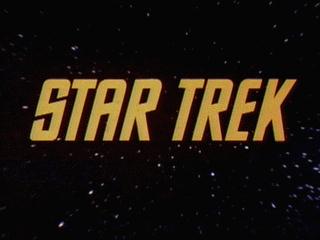 Family review of the most recent Star Trek
Family review of the most recent Star Trek
This is a guest column written by Uncle Bear.
There have been a couple of official Star Trek roleplaying games over the years. I’m only familiar with the one from FASA, which I played quite a bit, but haven’t seen enough of the Decipher game to comment. Regardless of the system used, if I ran a Star Trek campaign there’s a structure that I would use to insure a variety of adventures with a logical basis for the characters to be there.
The Ship
It never made sense to me that both the original series and the next generation had such large ships and crews when we only ever had a handful of characters. I’d go with a very small ship, with a small crew. Then you have fewer NPCs to deal with, and a reason for player characters to do more things because they have to fill multiple roles.
The Crew
To my thinking, there are only three roles that need to be filled: Pilot, Engineer, Doctor. Someone to fly the ship, someone to fix the ship, someone to heal the people. Any of these could be filled by NPCs, of course, but it’s more interesting for player characters to have these roles. Characters can really have any other skills the players want, as long as these three roles exist. I’d let players use existing races, or make up their own (most races in Trek are just humans with body paint and/or latex thingies on their heads anyway). As the gamemaster, I’d assign rank based on player experience, both in roleplaying and with Star Trek. The veteran gets to be Captain, the newbie gets to be an Ensign and work his way up. I’d let the Captain make field promotions, with approval from Starfleet Command (i.e. me, the GM).
The Base
I’d have the ship based at a starbase or a planet. Then they’d have access to interesting NPCs, different types of adventures, a place to repair an resupply, and an NPC officer to get orders from.
The Patrol and The Missions
It never made sense to me that the Enterprise (any incarnation) would go out of its way to travel hundreds of light years to transport one scientist or one diplomat, no matter how important they were. By giving
the ship a regular patrol route, it makes sense (logic!) for them to be deliverying supplies or ferrying passengers from point A to point B. They could also be dispatched on short notice to investigate anomalies
or to intercept unidentified alien spacecraft entering the sector. Of course, a regular patrol also allows their enemies to set up an ambush. The real value of having a patrol route is that the gamemaster only has
to create a finite number of planets and NPCs, which he or she can reuse, and it allows for plotlines that are non-episodic and can unfold over time.
The Roleplaying
Adventures should be designed around the player characters’ abilities. If someone plays an alien, that race and/or their enemies should play an important part in the campaign. When an alien race is needed, fall back
on the player characters’ race. If someone wants to be a xenobotanist, make sure to create adventures where that’s important. If someone plays a diplomat, make sure there are diplomatic missions. The characters the players create reflect the sorts of adventures they want to play, so use that as your springboard.
The Era
The great part is that the above formula will work in any era. Just change the uniforms, ship designs, and aliens!
Sounds like DS9…
I think your advise on creating adventures around what characters the players make can be applied to any game or setting.
Hmm… this doesn’t feel like Star Trek to me.
While I see the value of the “patrol” when planning adventures, and agree that it can definitely make up the bulk of play, a great amount of Star Trek’s appeal is the “Going where no man has gone before.” On some level I guess it comes down to whether you liked Deep Space Nine’s setup or TOS, but I definitely feel that the idea of flying into the void with no destination other than scientific curiosity is integral to the spirit of Trek.
Similarly, many players really dig the idea of having underlings to boss around, and I think that the large crew has a lot to offer in terms of roleplaying and opportunities for plot hooks and betrayals. Not to mention you need redshirts to kill.
For the most part I agree with you, and as I am considering running a Star Trek game myself, I see the appeal of, and fully intend to use many of the ideas in this post, but I think that in the cases above detail and ingenuity are more important than expediency for the Dm.
Berin did wonderful write up. Yes I agree that what he describes is more DS9 than TOS but that doesn’t make it any less Star Trek.
A DS9 or VOY setting is more a setting for an ongoing campaign. TOS or TNG would be what I’d use for a one shot game.
I thought DS9 had the most going for it as a series (especially once they added in the Defiant – best ship ever).
For an example of what Berin is talking about, click HERE
Where is part IV, Hank? That is a pretty amazing thing that they did.
The list says that part 4 should be available this Fall. I like what I’m seeing so far.
Me too, that’s why I can’t wait for part 4.